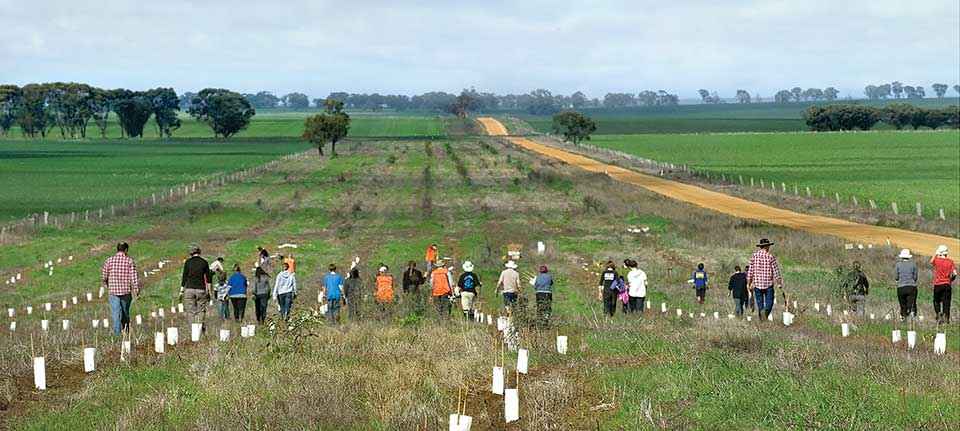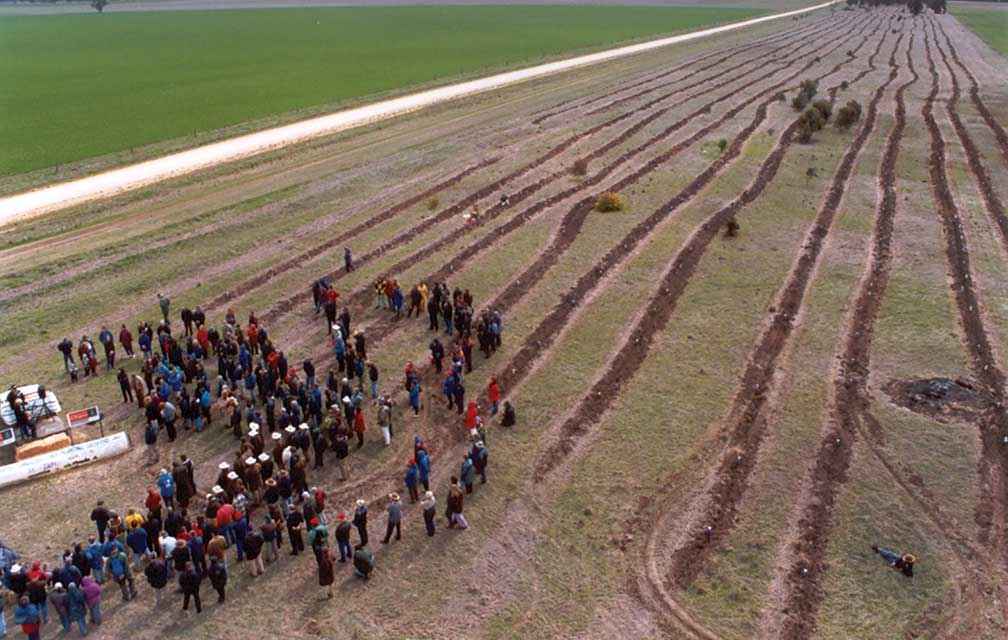Victorian Landcare Magazine - Spring 2020, Issue 79

Project Hindmarsh started on a lounge room floor in Nhill in 1997, when a group of concerned local residents began looking over a newly produced map that showed all the remnant vegetation along roadsides in the West Wimmera and Hindmarsh Shires.
The map had been put together by an enthusiastic environmental consultant, Rob Scalzo, engaged by the West Wimmera Tree Group to document the extent and condition of native vegetation on roadsides in the two shires. Many of the two chain (40 metres) and three chain (60 metres) roads in the shires were originally set aside as stock routes. The native vegetation along some of these roads was the only remaining native vegetation left in the district, and often still in good condition. But there were also many lengths where no native vegetation remained at all.
Rob Scalzo’s map identified 100 kilometres of gaps in roadside connectivity.
“If the gaps were closed, a 2000-kilometre link between national parks, waterways, wetlands and remnants – joining the Big Desert to the Little Desert, could be created,” Rob said.
The Hindmarsh biolink quickly became the signature project of the Hindmarsh Landcare Network.
The first Project Hindmarsh community planting weekend was held in 1998. The trees were ordered but the newly established Hindmarsh Landcare Network had no money. The committee began urgent fundraising, developing partnerships and seeking volunteers.
Former Hindmarsh Landcare Network Chairperson Darryl Argall described it as not-quite organised chaos.
“Around 300 city and country volunteers came along to that first planting weekend, working side by side planting thousands of trees along 18 roadside sites, and all involved had a fantastic time,” Darryl said.
In the first three years, Project Hindmarsh planted over 120,000 trees and shrubs and established 402 kilometres of direct seeding lines covering 250 hectares. There were successes, but also failures. In 2000, volunteers were devastated when 1440 trees were found dead within a fortnight of being planted after they were deliberately sprayed with herbicide.
The final tree in the link between the Big Desert and Little Desert was planted in 2001 by the then Federal Environment Minister, Senator Robert Hill. The planting took place at Leftys Corner, a three-chain road intersection north of Kiata. A plaque was erected after the ceremonial planting to commemorate the occasion.

Above: Leftys Corner, north of Kiata, was the site for the planting of the final tree in the Hindmarsh biolink in 2001.
Project Hindmarsh continues to build links along the chain. Roadside plantings have continued for many years, but the focus has shifted towards the restoration of cleared land, planting shelterbelts and restoring degraded remnant woodlands.
2020 has been a challenge. Unfortunately, we could not host a community planting weekend, but we still managed to get 12,500 plants in the ground across four sites along the Wimmera River and floodplain, using contractors. The plantings will further strengthen the river’s function as a biolink corridor and complement all the hard work along roadsides from weekends past.
Project Hindmarsh is a credit to the many hundreds of dedicated volunteers who have supported us over the last 22 years. We look forward to building many more links between the Big Desert and Little Desert regions in the future.
Jonathan Starks is Landcare Facilitator for the Hindmarsh Landcare Network.
For more information email jstarks@hindmarshlandcare.org.au